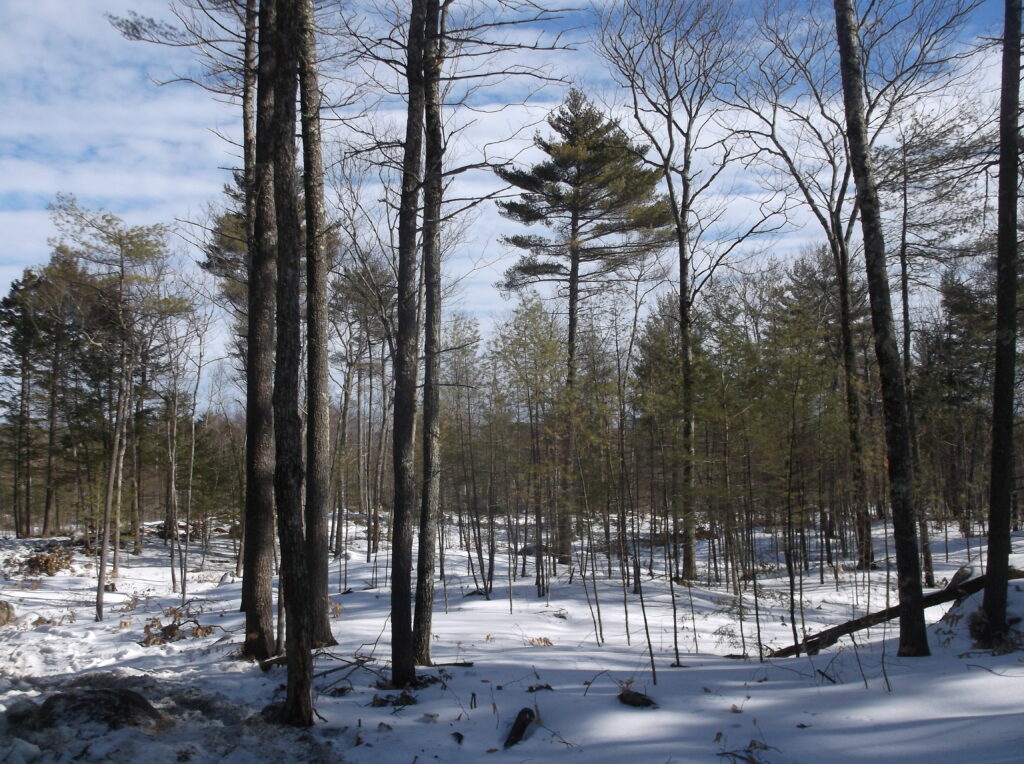Silviculture
Should We Manage Forests?
By Robbo Holleran

As active stewards of forests in our region, we are often called to respond in support of our profession. This might come in the case of daily sales of our services, or just interacting with a neighbor. Better yet, we might have an opportunity to speak at a local school, or some public meeting. National Forests and State Forestry Departments sometimes seek public input for general plans, or specific projects. The other guys are going to show up, and they tend to be quite passionate – we all have a story to tell.
The choice to manage forests actively, or to let them grow – and die – by natural means has a lot to do with our expectations. We have no wood expectations from Yellowstone National Park. A look at Google Earth shows vast areas of gray ash with merely a scattering of new trees since the giant fires of 1987. They told us that this was nature’s way of renewing the forest. Natural is not always pretty.
On the other hand, we expect to see healthy trees, well-tended in public parks like Central Park in NYC. High-risk and unhealthy trees are removed, and replacement trees are planted and cultured. We expect the wood to go to some use, even if it is a mere byproduct.
Public lands have not lived up to their expectations for excellent stewardship or wood production. Over a hundred years ago, Teddy Roosevelt dealt with the same public perceptions of management vs. natural processes as only an expert politician could have. He had Gifford Pinchot, one of the first foresters in America, speaking in one ear about the benefits of sustainable forest management. In the other ear, he had John Muir, founder of the Sierra Club, talking about the wonders of the natural world. Roosevelt started what would become the National Park Service and put Muir in charge. He started what became the National Forest Service and put Pinchot in charge.
Since then, we expect the Parks to be natural, and the Forests to be managed. It seems that more and more “park management” comes into the National Forests, with areas restricted from logging for every reason possible, but hardly a tree is cut on National Parks. State forests tend to be more responsive to local culture, but still, state politics is involved. There are always voices saying, “Don’t cut, cut less, or cut less often.” That is why we must show up and tell our story.
The northeast region has mostly privately owned forests, so private landowners are making the decisions to harvest or not. The high cost of property taxes and land ownership is a powerful motivator, and many states have land-use taxation that promotes active management. These owners have high expectations. Land is a significant investment for most family owners or businesses. Whether it is for recreation, hunting, or long-term investment, selling timber is the main dividend, and often a means of achieving various objectives like wildlife habitat, trails and other benefits. Much of this land is managed by professional foresters who make sense of the periodic harvesting to suit these owners’ objectives, and are essentially “brokers” who need logging services.
Forestry has changed a lot in 40 years. When I started there were water quality problems, high-grading, and other exploitative practices. Other parts of the country had excessive clearcutting, sometimes with erosion and lack of reforestation. It was correct for concerned environmentalists to complain, and “cut less, or cut less often” was a mantra. The modern logger and forester have addressed all those demands as we comply with Best Management Practices for stream protection, and other sustainable forestry protocols for wildlife habitat, residual stand quality, and reforestation. Now they are asking for something new.
Carbon management in forests has become an important topic in our society, and, contrary to what many laypeople are led to believe, a well-managed forest has incredible carbon benefits. The “cut less, or cut less often” groups will say that forests are best used to store carbon, and that the more carbon in the forests, the better. Ironically, even if we show that we can manage the forests so that they are better able to store carbon, they lose interest. For example, a forest made up of species for which there is a short life expectancy, like poplar, beech, or ash can be influenced to change the species composition to longer lived trees. White pine and red oak, especially with hemlock mixed in, can store a lot of tons per acre. And we know how to do that. So, is their philosophy really about carbon?
Let’s look at some activities and their carbon implications. In the unmanaged forest, we expect that trees will die. That is part of the natural process. We know the tree will rot or burn, releasing its carbon over the next few decades. Some larger sections, or carbon in the soil, might linger for 50 years.
If you walked into that forest and cut a section of that dead tree with a hand-saw and carried it out of the woods to make a chair, your carbon footprint is approximately equal to the food you ate that day, plus a bit for your saw and clothing. Now you have a chair and some scraps. If you used the scraps for firewood, and did not buy a plastic or metal chair, you have an incredible carbon “benefit” by replacing other heat sources, other raw materials, and their processing.
If you used a chainsaw and tractor to cut the tree, you are still way ahead on the carbon account. We find that operationally, it takes one or two percent of the “energy value” of wood to produce it with diesel power. And if we can get that tree just before it dies, it does not change the carbon equation at all – we get a better chair and less waste. This is what we would like the “carbon philosophers” to understand.
From that starting point, it is a small step to say, “Let’s get that tree at its prime usefulness,” and then, “Let’s influence the forest to grow those trees to prime usefulness.” Now we are already at “sustainable forestry.”
If you live in a highly forested area, there are about a million acres in a 25-mile circle around your house. That makes a good discussion unit, and often corresponds to our “working habitat.” Northeastern forests have about 100 tons per acre (green weight) of wood, which we can call “carbon storage.” Typically, there are about two tons per acre of growth each year, or just less than one cord. This will vary a bit with forest type and soil quality, but is a good average. In broad terms, we see about a half-ton of mortality, a half-ton of harvest, and a ton of additional storage across the landscape. This is 500,000 tons, or 200,000 cords of wood dying around your house each year. Leaving these forests alone, to “store carbon” will have some additional storage, but as these stands reach “full stocking” we will merely increase the rate of mortality and decrease the rate of additional storage. Most forests in our region are pretty close already since we have harvested less than the growth rate for the past 100 years. This mortality is a serious carbon source that no one wants to consider.
If we could do “ideal forest management” we would have an average stocking of closer to 80 tons per acre. We would have proper regeneration cutting on about 1% of the acres, and eventually a balance of age classes, with the wildlife benefits of 10% young forests habitat. We would harvest closer to the growth rate (2 to 3 times more wood in most areas). Mortality would decline immensely, so that is almost 500,000 tons of carbon dioxide that is not being emitted by your forest each year. The wood products would go toward solid wood products, paper and fuel, as they normally do. Of course, we would need more markets.
Over a million tons of wood waste and byproducts would be used to replace fossil fuels. Wood is the best raw material, from environmental standards and carbon footprint, compared to other materials. Durable wood products store an additional 200k tons for some longer period, but more importantly, they replace 3-10x their weight in higher-carbon alternative materials. If we use 5x, that makes for a savings of another million tons of carbon benefits each year.
By managing our forests well, harvesting close to the growth rate, and using various byproducts for biomass energy, we replace close to two million tons of fossil fuel energy each year on an ongoing and sustainable basis, and we “gain back” that half-million tons of mortality for a healthier overall forest. That is why forests are more important than merely storing carbon, and that is part of our story.
Robbo Holleran is a consulting forester based in Vermont and licensed in three adjacent states. He is an active writer, speaker, and teacher on a wide range of forestry issues. He shares an Outstanding Leadership in Industry Award from NELA with Steve Hardy.
